Nature in Ryde Cemetery – June 2008
We carried out our monthly the Nature walk on the 1 June and it was a warm but muggy day. Where the grass has been allowed to grow the meadow flowers were in abundance; Butterflies and insects were busy collecting nectar.
Many of the trees in the cemetery are in flower including Dogwood (see image), Lotus Tree and Bird Cherry. I think the Victorian gardeners planted these Ornamental Trees and they make a wonderful picture. The Elder tree is in full bloom also many Bramble bushes are now in flower promising a good crop of Blackberries in the autumn.

Dogwood
Of course many of the wild flowers we have already mentioned in April and May. Buttercups, Daisies, Honey suckle, Dandelions, Cow Parsley and others are still in flower but we also found some new ones Bloody Cranesbill (see image), Scarlet Pimpernel, Bindweed, Lords and Ladies and Bitter Sweet. There were many insects flying around but most of them did not alight long enough for us to identify them but we did see a wasp and a bumble bee.
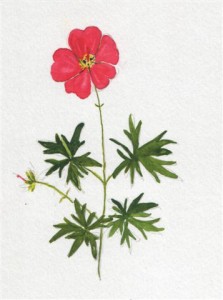
Bloody Cranesbill
We saw many birds – the usual Wood Pigeons, a flock of Starlings also a Green Woodpecker and while we were wandering about a Black Bird (see image) entertained us with his beautiful singing.
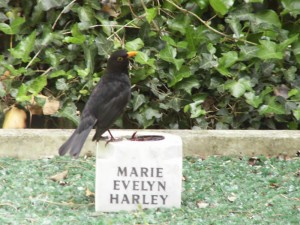
Blackbird
We saw a Black Ladybird with two red spots and I believe this is one of the Harlequin ladybirds, not a native to the British Isles and a danger to our Native species.
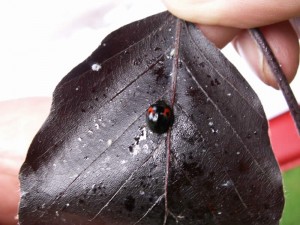
Harlequin Ladybird
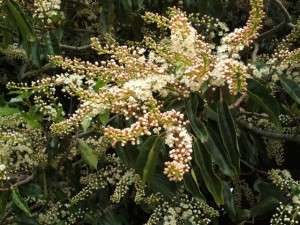
Bird cherry is a deciduous tree with a single trunk up to 9m tall, it has brown bark which peels easily and is strong smelling. It grows on acid soild otfen in oak and birch woods and scrub.
The flowers have five white, irregularly toothed petals, they usually open in May and hang in 10 – 40 flowered spikes. The flowers have a sickly almond scent that attracts insects, particularly bees and flies. The flowers develop into small, black cherries each containing a single, hard, oval stone. They ripen in July. The fruits are rich in tannin and despite their bitter taste are eaten by birds like robins and thrushes.
In the Middle Ages the bark was gathered to make an infusion used as a tonic and sedative for stomach pains.
Bittersweet
Solanum dulcamara (Solanaceae)
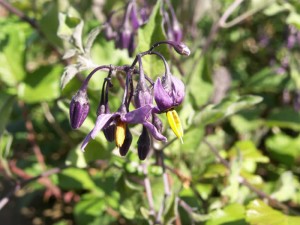
The flowers of this woody climber are recognisable because they are similar to those of the tomato and potato, to which they are related. The five slender deep purple petals are usually swept back revealing the bright yellow, cone shaped anthers.
The flowers later form clusters of egg shaped fruit, green at first then ripening to orange and finally red. They last long after the leaves have withered. The leaves are arrow shaped with three to five deeply cut lobes.
In common with other members of this plant family the whole plant is poisonous.
Clambers over hedges and other vegetation. Flowers from May to September.
More nature photos:
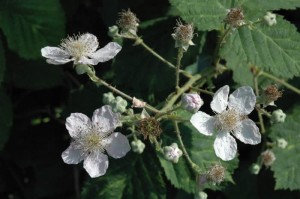
Bramble flowers
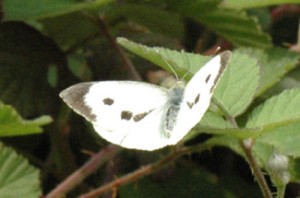
Cabbage White Butterfly
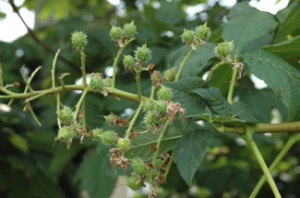
Conkers forming
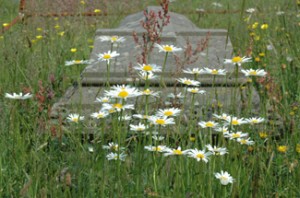
Daisies and Grasses
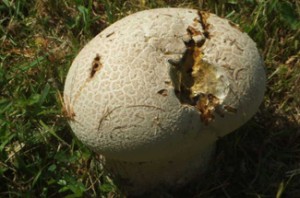
Giant Puffball
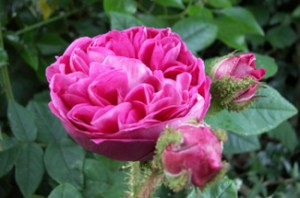
Rose
The list of plants and insects we find in the cemetery is ever increasing and if, when you visit the cemetery, you should notice anything that would be of interest, please let us know by making contact through the Contact Us page of the website.
Photographs contributed by Maisie Kitching, Janette Gregson, Carol Strong and Diana Wood
Information about Bird Cherry Tree from the website: http://www-saps.plantsci.cam.ac.uk/trees/cherry.htm

